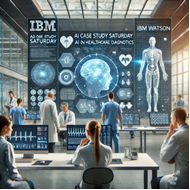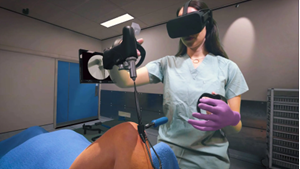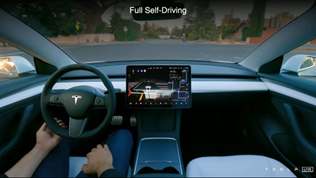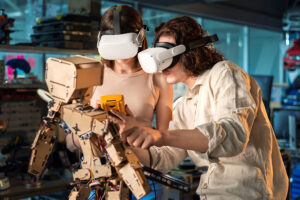What is AI Transformation?
AI transformation refers to the deep integration of artificial intelligence technologies into various sectors to enhance productivity, decision-making, and user experience. It’s not just about automation but about enabling systems to learn, predict, and evolve—mirroring aspects of human intelligence.
AI transformation involves:
- Data Processing: Large-scale data analysis in seconds.
- Machine Learning: Systems that improve over time.
- Natural Language Processing (NLP): Machines understanding human language.
This revolution is also empowered by augmented reality (AR) and virtual reality (VR), providing spatial and immersive intelligence alongside AI’s cognitive capabilities.


AI vs AR/VR: What’s the Difference?
While AI mimics human thinking, AR overlays digital information on the real world, and VR immerses users in entirely digital environments.
| Aspect | AI | AR | VR |
| Intelligence | Cognitive (learning & reasoning) | Spatial (overlay of information) | Immersive (simulation of realities) |
| Interaction | Algorithms and data | Real world + digital | Fully digital environment |
| Use Case Example | Fraud detection in finance | IKEA Place app | VR surgical training |
These technologies often work together—AI provides the brain, and AR/VR delivers the body and environment.

AI in Healthcare: Revolutionizing Patient Outcomes
AI in Diagnosis
IBM Watson Health led the way by using AI to analyze patient data, medical literature, and diagnostic images. Today, tools like Google DeepMind detect eye disease and cancer faster than human doctors.

Predictive Analytics in Hospitals
Hospitals use AI to forecast:
- Patient admission rates
- High-risk patients for readmission
- Optimal scheduling for surgeries
This reduces overcrowding and enhances patient care.
AI in Drug Discovery
AI accelerated the COVID-19 vaccine development by analyzing protein structures and predicting molecular behavior.

AR/VR in Medical Training
VR Surgery Simulations
Platforms like Osso VR allow medical students to perform virtual surgeries before operating on real patients. This improves skill retention and confidence.

AR for Anatomy and Patient Education
Apps like Microsoft HoloLens help visualize internal organs in 3D. It transforms abstract textbook knowledge into tangible, visual learning.

AI in Transportation: Smarter, Safer Roads
Self-Driving Vehicles
Companies like Tesla, Waymo, and Cruise use AI to detect pedestrians, read traffic signs, and make real-time driving decisions.

AI-Powered Traffic Management
Cities like Barcelona and Singapore utilize AI for:
- Predicting congestion
- Dynamic traffic signal adjustments
- Real-time route optimization
This leads to reduced fuel consumption and emissions.
AR/VR in Automotive Industry
AR Dashboards
BMW’s HUD projects speed, navigation, and alerts directly onto the windshield. It keeps the driver’s eyes on the road.
VR Driving Simulations and Design
Auto companies use VR to:
- Test safety in simulated environments
- Allow customers to customize and experience vehicles before purchase
AI in Finance: The New Age of Money Management
Fraud Detection Systems
AI tools like Darktrace and Kount analyze real-time spending behavior to block fraudulent transactions instantly.
Robo-Advisors and Predictive Trading
Platforms like Wealthfront and Betterment use AI for:
- Personalized investment plans
- Portfolio optimization
- Risk management
Banks also use AI to forecast market trends, making investment strategies more data-driven.
AR/VR in Real Estate
VR Property Tours
Apps like Matterport and Zillow 3D Home allow buyers to tour homes remotely. This saves time and accelerates decision-making.
AR for Interior Design
Tools like Houzz AR let users visualize furniture in their home using a smartphone camera, aiding faster purchases and fewer returns.
AI in Education: Personalized and Scalable Learning
Adaptive Learning Platforms
Platforms such as Knewton and DreamBox customize lessons based on student progress and weaknesses. They ensure no child is left behind.
AI Tutors and Assessment Tools
AI chatbots like Socratic by Google offer step-by-step homework help, while tools like Gradescope assist teachers in grading.
AR/VR in Classrooms
Immersive History and Science Lessons
Imagine walking through Ancient Rome or exploring inside a human heart. Apps like TimeLooper and VictoryXR make this possible.
Virtual Campus Tours
Universities offer VR tours to global students, reducing the need for physical travel while increasing enrollment.
AI in Retail: Smart Recommendations and Inventory
AI Chatbots and Assistants
Retailers like Sephora and H&M use AI assistants to offer:
- Personalized product recommendations
- Style suggestions
- Instant customer service
Predictive Inventory and Customer Behavior
Walmart uses AI to:
- Anticipate inventory shortages
- Optimize warehouse distribution
- Understand local buying patterns
AR/VR in Shopping Experiences
Virtual Try-Ons
Apps like L’Oréal’s AR Makeup and Warby Parker’s Glasses Try-On allow customers to see products on themselves before buying.
In-Store Navigation with AR
Retailers like Lowe’s use AR apps to guide shoppers through aisles to find products efficiently.
AI in Manufacturing and Robotics
Predictive Maintenance
AI predicts equipment failure before it happens, minimizing downtime and maintenance costs in factories like GE and Siemens.
AI-Powered Robotics
Manufacturing robots now:
- Adapt to changes
- Work collaboratively with humans
- Assemble complex devices like smartphones and vehicles
AI & AR/VR in Entertainment
Game Design with AI NPCs
Games like The Last of Us Part II use AI to make enemies smarter, more reactive, and emotional.
Immersive Storytelling in VR
Experiences like Wolves in the Walls create interactive narratives where users impact the storyline, combining AI-driven characters with VR immersion.
Ethical Concerns and Challenges
- Job Displacement: Automation may replace certain jobs, requiring upskilling.
- Bias in AI: Algorithms can reflect social prejudices if not trained properly.
- Privacy: Collecting user data in AR/VR environments raises concerns.
Ethical AI governance and regulations are urgently needed.
The Future of AI and AR/VR Collaboration
As the boundaries between virtual and real continue to blur, expect:
- Hyper-personalized experiences
- Digital twins of everything from buildings to human organs
- AI-driven metaverse ecosystems
The synergy of AI + AR/VR is poised to redefine daily life.
FAQs on AI Transformation
1. What industries benefit most from AI transformation?
Healthcare, finance, education, and retail are currently seeing the biggest gains.
2. Is AI replacing human jobs?
AI is more likely to augment jobs, though repetitive tasks are being automated.
3. Can small businesses afford AI tools?
Yes! Cloud-based AI platforms offer scalable solutions for all business sizes.
4. How safe is AR/VR in healthcare?
Very safe—especially in training environments. It reduces risk before real-life application.
5. What is the main challenge of adopting AI?
Data quality and availability, as well as employee training and ethical concerns.
6. How do AI and AR/VR work together?
AI processes the data and user input; AR/VR visualizes it interactively.
Conclusion: Embracing the New Reality
AI transformation, fueled by AR/VR, is not a distant dream—it’s happening now. From curing diseases to transforming shopping and education, these technologies are shaping a better, smarter world.
To thrive, individuals and businesses must adapt, learn, and embrace innovation. The future is no longer approaching—it’s already here.

